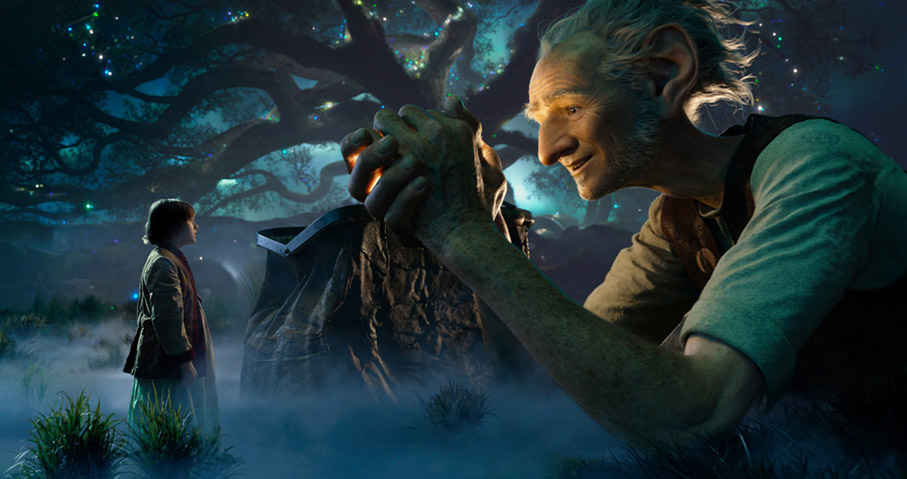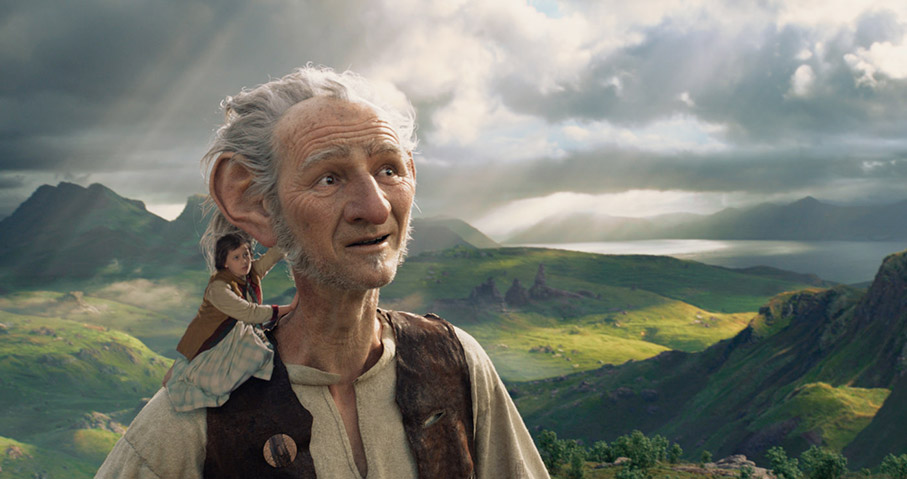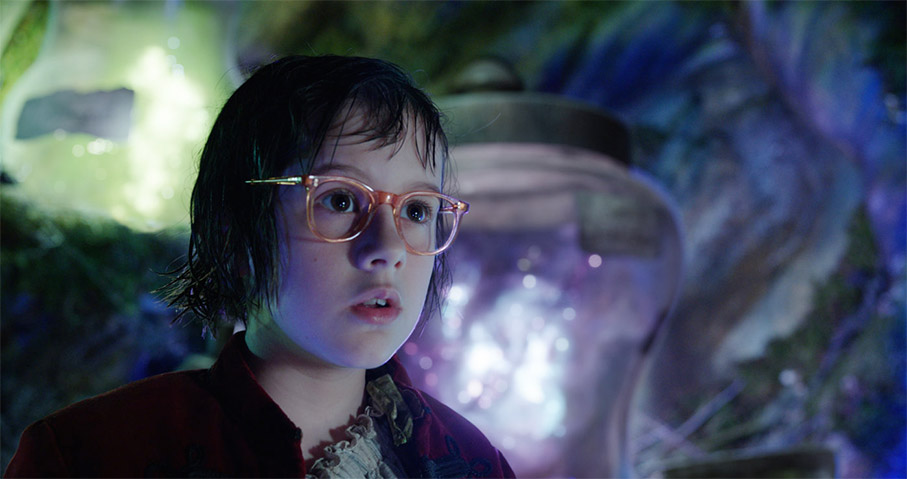| |
"I worked three years on it, and the worst moment I had was when I finished the movie, when it was all done. I had finished the color correction, the soundtrack had been mixed, Johnny Williams had finished his brilliant score, and I was faced with the fact that I wasn't going to return to the film again. It was at that moment that I realized how deeply in love with this project I had fallen. I didn't even know that until the last day on the film." |
| |
Director, Steven Spielberg * |
There is something overwhelmingly poignant about a screenwriter or any artist dying before their creation has reached fruition. I'm not talking about those who start a project knowing its continuance will outlive them (like Antoni Gaudi's involvement with the extraordinary Sagrada Famìlia, the building of which began in 1882 and is scheduled for completion between 2026 and 2028). I specifically mean those craftspeople and artists who expected to be able to experience their own completed work. When shown SFX rushes of Blade Runner, author of the source novel ‘Do Androids Dream of Electric Sheep?' Philip K. Dick said "It's my own interior world, they caught it perfectly." He died three months before the movie was released. Writer, Melissa Mathison, famous for her screenplay of E.T., died last November and her final project The BFG is fittingly dedicated to her. Quite a few years ago, I had heard from a friend, Roald Dahl's goddaughter in fact, that the script was very good and that Melissa was a lovely lady to collaborate with. Appetite suitably whetted. My friend used to oversee and authorise all creative adaptations of the author's work because she was uniquely qualified to do so. The original book of The BFG is great fun, full of inventive wordplay if a little light on narrative with the ever-present dark side in place, a darkness that is a Dahl staple. Spielberg was never going to shoot children's bones at the foot of windows through which they were snatched and then eaten on the spot (at least I'm fairly sure he's not going down that road) but the film's early reviews have been largely positive even if business has not (see the postscript).

So with a certain excitement I tried to banish my experience of the first trailer. I hope I'm not losing parts of my own sense of wonder but perhaps being soaked with knowledge about how things are done these days has given my inner child a nasty case of the disbeliefs. As soon as I saw the bigger, unfriendly giant, it just screamed at me ‘computer generated' and I just couldn't engage. I wonder if cannily shot normal human beings loaded with prosthetics was even considered in this age of the pixel. Spielberg actually dismissed this; "I could have made The BFG with actors on oversized sets using a digital blend, but I wanted the giants to look beyond human. The only way I could capture magic with the giants was to animate them based on the performances of the actors I was casting and have the animation be super-photo-realistic." Odd, isn't it, how I can effortlessly engage with a one hundred per cent computer animated film. I shed a few tears for Woody and Buzz, for goodness' sake. Perhaps it's the CG within a normal reality world that's giving me pause. Or maybe it's simple characterisation. Let's see if Rylance is good enough to make me forget I'm watching a man in a skin-tight Lycra costume with motion tracking dots all over him prancing around a green room (with no refreshments).
O.K. Let's dispense with the superlatives right up front. The film belongs to Rylance whose giant is a marvel of delicate, perfectly pitched performance, incredible visual effects and heaps of heart. You can see why Spielberg is so taken with the actor. The word the director uses in interviews to describe his new found friend's talent is ‘fluidity', Rylance's ability to change to suit different characters. The BFG himself is a west countryman, an old soul who sometimes sounds like he may have had a few too many drops of a favourite tipple. The accent is flawless and resolutely regional. Sophie (one assumes an English orphan) played by Ruby Barnhill is sometimes given an Americanism to deliver ("someplace else" rather than "somewhere else") but hey, that hardly qualifies as a quibble. While I enjoyed her performance and the steel and courage she has to show on a few occasions, she didn't resonate as much as I'd hoped but that's perhaps due to there being relatively little action for her to get to grips with aside from hiding a lot. Henry Thomas in the equivalent role of the character we most identify with in E.T. was at least eye-to-eye with his animatronic co-star for most of the film and there were many more ‘moments' in that 1982 blockbuster that allowed the audience to warm to him and his alien pal. The BFG looks gorgeous right from the highly stylized London streets to the natural folds and valleys of ‘Giant Country' which to be geographically accurate, is north of the British Isles somewhere. It's also clear that there has been a lot of love spilled and distributed in the film's creation. It imparts an overall sensation of being infused with affection in almost every department. However this, on its own does not a movie make...

Unfortunately, I'm never too far away from having the unreality of the animation sucker punch me back into Wakeful-Outside-The-Cinema Land (the bigger ‘human bean'-eating giants - led by one Flight of the Conchord, Jermaine Clement - are the main culprits here). Nonetheless, the heart of the story, the relationship between a young girl and the BFG is largely distraction free. You buy the bond, which is just as well as this two hander is a large percentage of what's on offer. This is the story of the orphan Sophie who spots the BFG on his dream-distribution rounds. Having no choice but to whisk her away for fear of her revealing his existence, the BFG and Sophie end up in Giant Country. At twenty-four feet tall, the vegetarian BFG is known as ‘the runt' by the other considerably bigger giants, all of which smell a ‘human bean'. Sophie tries to keep out of their way while the BFG carries on his singular work, catching dreams, storing them in jars and then redistributing them to London's sleeping populace. But the bad giants are also London bound to scoff as many ‘beans' as they can. How can Sophie and the BFG stop them? In some ways, I wish I wasn't so familiar with the story. The movie is certainly faithful with a few welcome changes to some details. But if you are well versed in Dahl's giant narrative, you do tend to tick the boxes which is not a movie experience at all, certainly not one espoused by Spielberg himself. But there is just enough movie magic to gawp at to keep you distracted even if you are too familiar with the plot.
The interaction between small and tall is flawlessly executed. Simply don't bother trying to second-guess the talent on display here. All bases are covered. There are no telltale slips, no forced perspective tricks to uncover. A twenty-four foot giant interacts with a normal sized girl and it's charming, touching and full of heart. But it's also, for a significant amount of screen time, event free. Yes, we are always entertained by the dichotomy in size and the movie magic that allows these two characters to interact but The BFG has a bad case of second act drag. While both characters are out plucking dreams from the air, instead of wonder, a genuine amusement and heartfelt empathy, I found myself shifting in my seat wondering if Spielberg actually thought extraordinary visuals were enough to compensate for leisurely story telling. Now, in context I'm all for leisurely story telling but this was too leisurely even for Spielberg's own usually acute sense of pace. There's a fine line between those scenes reliant on eliciting a sense of wonder at the visuals and those that deliver the narrative goods. The best shots do both. It is by no means a fatal flaw to what is a hugely entertaining film but it's never a good thing when you are reminded of a deleted scene from Monty Python and the Holy Grail... "Get on with it!"
Filing down the book's sharper edges was always going to be main job of adaptation. Spielberg is as far from ‘edgy' as you can get despite his considerable technical skill. The litany of how different races taste (word games mostly) and react is nowhere to be found. Perhaps the book's mention of ‘Baghdad' and ‘beheading' in this movie would have pulled you out of its spell quicker than a Trump Rally would eject a person of reason, intelligence and common sense. And then of course, there's the wind breaking – no, not the erection of a piece of canvas on a blustery day at the beach - Bill Bryson adds "If you need a windbreak, then why are you there?" I'm talking about the results of a bubble down beverage that produces unabashedly powerful flatulence. This isn't a Spielberg comfort zone behaviour at all so how does he handle it? With bright, cheerful colours, much slapstick and you can bet your life, the emissions are guaranteed odour free.

John Williams' score – instantly identifiable as his work – is surprisingly theme free. I have listened to it through twice without the visuals and could not pluck out a recognisable, repeated melody, which I have to say surprised me and left me a little downhearted. I am no music expert so there may be something extremely clever going on which I couldn't detect but I was hoping for a BFG Theme at the very least. What we have in its place is a sort of subtle, quiet firework display of a score, one that permeates the movie in question, lights it up in places but serves the whole rather than picking out the specific except for the cue Dream Jars which plays out as a freeform jazz accompaniment as performed by Tinker and her Belles. I didn't warm to his original Harry Potter theme at all and his recent Star Wars work didn't light me up either. It could be, of course, my age and that no one can expect what Williams used to churn out thirty years ago, a seemingly unending stream of top-notch scores (some notably derivative) with hummable themes that arrived enthusiastically at the gates of popular culture and was granted entry with big goofy smiles. But a theme would have been nice. Perhaps the twenty-seventh collaboration between the two cinema greats resulted in Spielberg saying "Hey, let's be daring. Score the whole movie as a light dance, a whirl of movement, not the specific characters..." This results in, to my own taste, an unmemorable score that serves but doesn't soar.
So, if you have wide eyed children who can stand a little narrative down time while every second provides you with extraordinary visuals, then The BFG is right up your stylised London alley. Also take a look if you want to see what wonders cinematic trickery can perform these days. If nothing else, Spielberg will always be at the forefront of the medium's cutting edge effects. It's just a small pity that the plethora of practical effects, gathered from every human craft and application has now been usurped by simple (but overwhelmingly complex) pixel power. If only we couldn't tell. I'm sure there are some children out there who will believe. Good luck to them.
Postscript:
It's no secret that The BFG has failed to light up the domestic box office. After a month in the US it has made just over a third of its production cost. This is not a good omen. Of course, we Brits are lapping it up and the global theatrical run is far from over so it may creep to a very respectable outcome or it may quietly have to rely on ancillary sales (Blu-rays and legit downloads) to claw back its $140 million budget and no doubt equally colossal marketing costs. Some commentators are asking whether Spielberg's domination of his own craft is on the wane. It certainly was a no brainer for Disney to pack the man off to Vancouver with a screenplay written by E.T.'s writer, a suitcase of cash and the talents of the best digital artists in the business. What could go wrong? How about we're not in 1982 anymore... Children today are enormously sophisticated and while The BFG skews very young and the very young seem to believe in what they see even if we adults all know it's all generated by a computer, there may be an argument to suggest that practical effects need not be so quickly dismissed. There was a believability in the original E.T., the result of a cunning use of animatronics, a mime's gloved hand, a midget in a suit and skillful voice work, all of which gave the character a reality that CG has yet to match. Even Spielberg himself has regretted its misguided digital upgrade. I do not think that The BFG has stumbled because of a lack of star power (how much bigger can an actor be up against Spielberg?) but an inherent disassociation between the digital and the dream. Discuss! Word of mouth generates huge box office and people are not responding to the film enough to inspire others to see it. CG is a star in The BFG. When it plays a supporting role, it soars because it's completely invisible. The very young will buy the effects as real but their discerning parents may not be packing their kids off to see the movie in the numbers that research indications had suggested. Yes, there's no marquee star, the story is very thin to fill up a two-hour movie (what's wrong with a crisp ninety minutes?) and there aren't enough incidents to make the giant grandparent-granddaughter relationship as moving as everyone needs it to be. But hey, the movie gods have been staring down benevolently at Spielberg for over three and a half decades. Perhaps they're finally shifting their giant gaze...
*http://www.insidethemagic.net/2016/06/interview-steven-spielberg-talks-the-bfg-walt-disney-a-lifetime-of-working-with-john-williams-and-indiana-jones-5/
|